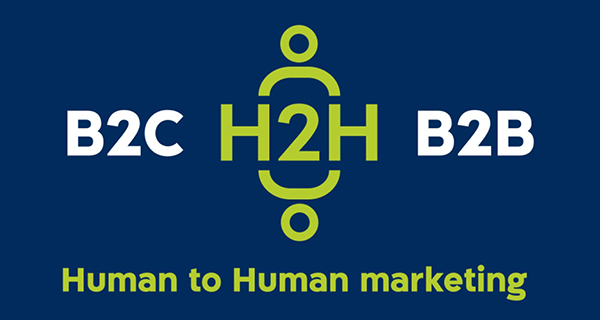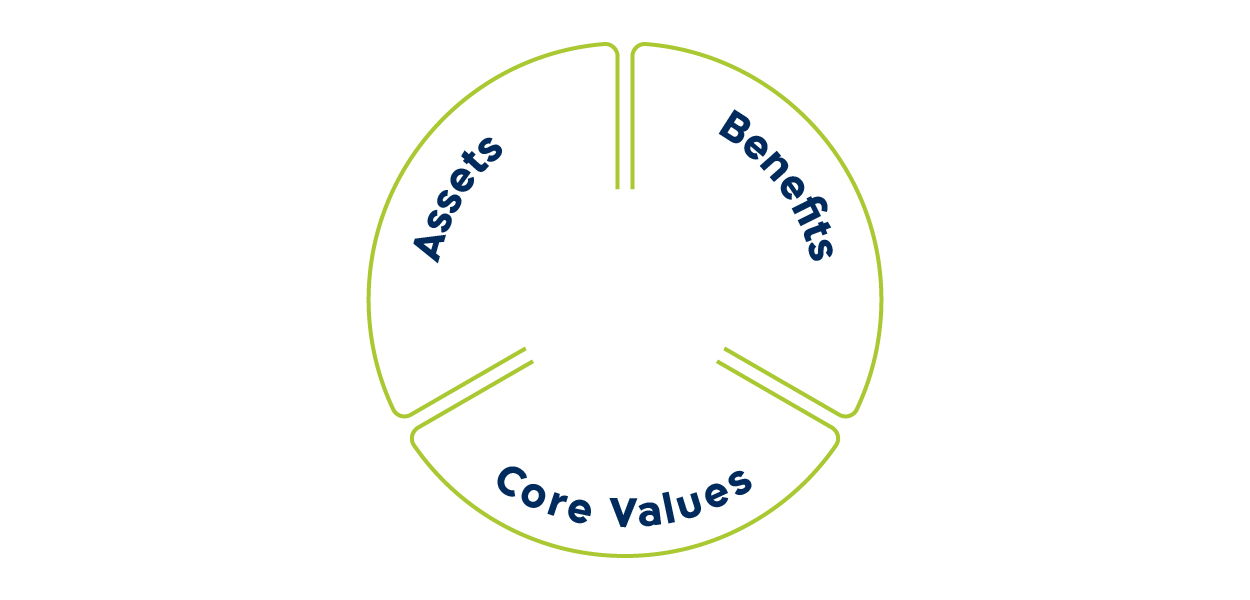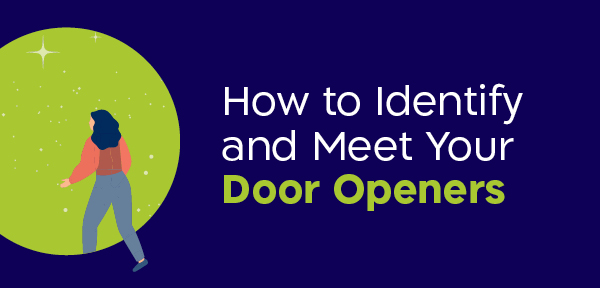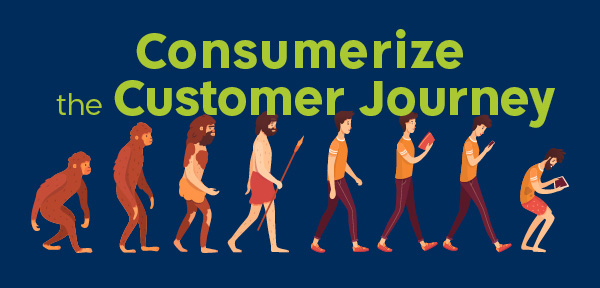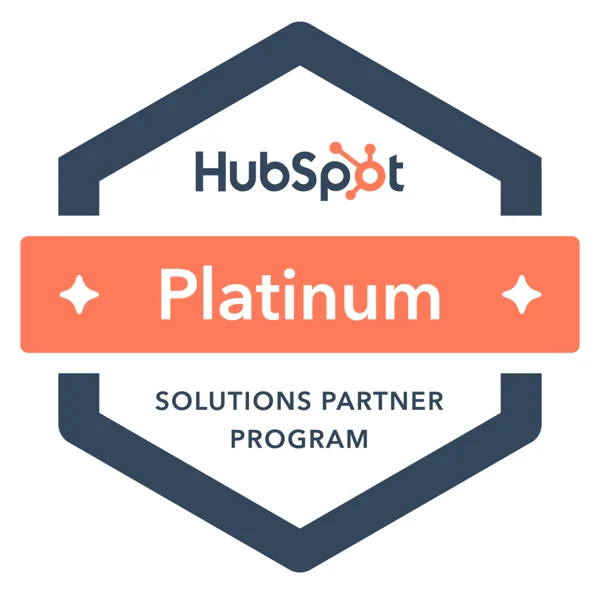Nirit Elyovich, MBA
VP Strategy
Nirit Elyovich, MBA Recent Posts
Let’s Talk About the Cheetah in the Room
By
Nirit Elyovich, MBA
, 26/08/2025
Is your marketing sprinting in the right direction? A simple five-step process keeps focus on what drives real business results.
 As a company that leads Israeli B2B companies to success in the global market, we’ve developed a structured five-step process to ensure marketing directly advances the company’s business decisions.
As a company that leads Israeli B2B companies to success in the global market, we’ve developed a structured five-step process to ensure marketing directly advances the company’s business decisions.
- Translate business decisions into marketing initiatives Take a disciplined look at your strategy through a marketing lens and identify which decisions can be transformed into marketing moves. Not every business decision needs to land on the marketing desk - that’s exactly why you have multiple executives around the table. The CEO ensures nothing falls through the cracks.
- Prioritize five key initiatives Establish clear criteria and select the marketing initiatives with the greatest potential to impact business performance. Keep the list realistic and aligned with budget and leadership attention.
- Deep-dive into the chosen initiatives Define success metrics, risks, internal stakeholders, milestones, and timelines for each initiative. This thorough review will also help you reassess whether the initiative you’ve chosen truly has a meaningful impact on business results.
- Win executive approval Confirm these are the most meaningful initiatives and gain budget approval. This stage is also an opportunity to sync with fellow executives.
- Build the annual marketing plan Break each initiative down into specific actions, map them across the year, and create a logical, effective flow of execution.
 The beauty of this process lies in its clarity. Every marketing effort is measured by its direct contribution to the business. If it’s not in the plan, there’s a reason.
It may sound simple - and it is - but it requires you to pause, plan, and sometimes partner with an external professional. Someone who will hold you accountable, challenge your thinking, and keep you focused. Someone who’s done this many times before and knows how to steer the process.
The cheetah doesn’t wait - and the year won’t either. Now is the time to focus your marketing on what truly matters for your business and drive real impact. We’re here to help.
The beauty of this process lies in its clarity. Every marketing effort is measured by its direct contribution to the business. If it’s not in the plan, there’s a reason.
It may sound simple - and it is - but it requires you to pause, plan, and sometimes partner with an external professional. Someone who will hold you accountable, challenge your thinking, and keep you focused. Someone who’s done this many times before and knows how to steer the process.
The cheetah doesn’t wait - and the year won’t either. Now is the time to focus your marketing on what truly matters for your business and drive real impact. We’re here to help.
Your Brand. Is it a Strategic Asset in the CEO Toolbox – or Lost Opportunity?
By
Nirit Elyovich, MBA
, 05/03/2025
Your brand is more than just a logo - it’s a powerful strategic tool. Discover how CEOs can leverage branding to build trust, differentiate, and drive business growth.
Your brand does more than create awareness — it's an engine of influence
A smart branding strategy connects your company's vision, unique value proposition, core values, and business goals. It answers a critical question: How does your company want to be perceived by all your stakeholders – within your company and beyond your walls to your target audiences?
3 Key Branding Principles Every CEO Should Adopt
1. Your Brand = Your Reputation Your brand is what people think of you. Your brand strategy defines what you want them to think. It's a long-term process, and while it's not possible to control every aspect of perception, clear and consistent messaging helps shape a positive reputation and build lasting influence. 2. Branding + Marketing = A Winning Formula
"Marketing is asking someone on a date. Branding is the reason they say 'Yes!'"
Your brand is much more than just a marketing tool—it's a strategic asset that can drive our business success.
To get more people to say yes—whether they are customers, employees, or investors—your brand must be:
2. Branding + Marketing = A Winning Formula
"Marketing is asking someone on a date. Branding is the reason they say 'Yes!'"
Your brand is much more than just a marketing tool—it's a strategic asset that can drive our business success.
To get more people to say yes—whether they are customers, employees, or investors—your brand must be:
- Relevant to their needs
- Differentiated from your competitors
- Inspiring and compelling
- Your employees are the face of your brand every single day. They bring your promise to life through their words and actions.
- When customers use your products and services, they're testing your promise over time. Each positive experience builds trust and reinforces why they chose you in the first place.
- Your digital touchpoints, from customer dashboards to online shopping, are opportunities to make your customers' lives easier and show them you understand their needs.
- The partners and distributors who work with you are extensions of your voice. When they speak to customers, those customers hear your promise through them.
- Your support team does more than just solve problems—they turn satisfied customers into advocates who will share your promise with others. What others say about us is more powerful than what we say about ourselves.
B2B Branding—A Challenge and an Opportunity
B2B branding navigates long and complex sales cycles, interacts with multiple decision-makers from different generations, and has a strong focus on technology and sales, which often doesn't prioritize marketing. When you manage the customer journey strategically, branding becomes a powerful opportunity—building trust, differentiating your company, and fostering long-term relationships with your customers.
A Strategic Brand Accelerates Your Business
Whether your goal is converting leads into customers, attracting top talents, or driving organizational changes, leveraging your brand helps you achieve it intelligently and elegantly.
Great brands don’t just sell products—they bring people together around something bigger and more meaningful. Ultimately, people seek meaning. What is your brand doing to provide meaning to your customers?
When you manage the customer journey strategically, branding becomes a powerful opportunity—building trust, differentiating your company, and fostering long-term relationships with your customers.
A Strategic Brand Accelerates Your Business
Whether your goal is converting leads into customers, attracting top talents, or driving organizational changes, leveraging your brand helps you achieve it intelligently and elegantly.
Great brands don’t just sell products—they bring people together around something bigger and more meaningful. Ultimately, people seek meaning. What is your brand doing to provide meaning to your customers?
Rules, Regulations & Medical Brands How your medical brand can stand out within the regulatory framework
By
Nirit Elyovich, MBA
, 15/08/2024
Balancing marketing ambition with regulatory compliance is no easy task for medical brands. Our latest blog explores how early collaboration between marketing and regulatory teams can transform these challenges into opportunities, ensuring your brand stands out while staying compliant. Discover the smart strategies to help your brand shine within the regulatory framework.
When the journey takes an unexpected turn
During branding strategy kick-off meetings, we take a deep dive into your product, technology, and service. We’re looking for a fresh perspective, a promise not yet made, a story yet to be told. At this point, we get excited as we hear about groundbreaking technologies, solutions, and life-enhancing, life-prolonging products. Our jaws drop. With this WOW feeling, we continue the learning process in which we talk to customers, analyze the competition, and create a multi-participant meeting within the company to fine-tune its significant and differentiated strengths and generate outstanding benefits for its customers. As the process continues, we begin to understand the regulatory limitations. Suddenly, “Cinderella”, your extraordinary technology is being held back by regulatory limitations and is covered with “soot”.
Understanding limitations and optimizing capabilities
During the process, we’ve heard “It’s a given” or “It's powerful, but I can't confirm it" more times than we can count. Responses like these made us understand there must be a better way. That’s how our new module was born. It’s placed right at the beginning of the branding strategy process, which sets the stage for an open and guided dialogue between marketing and regulatory early on.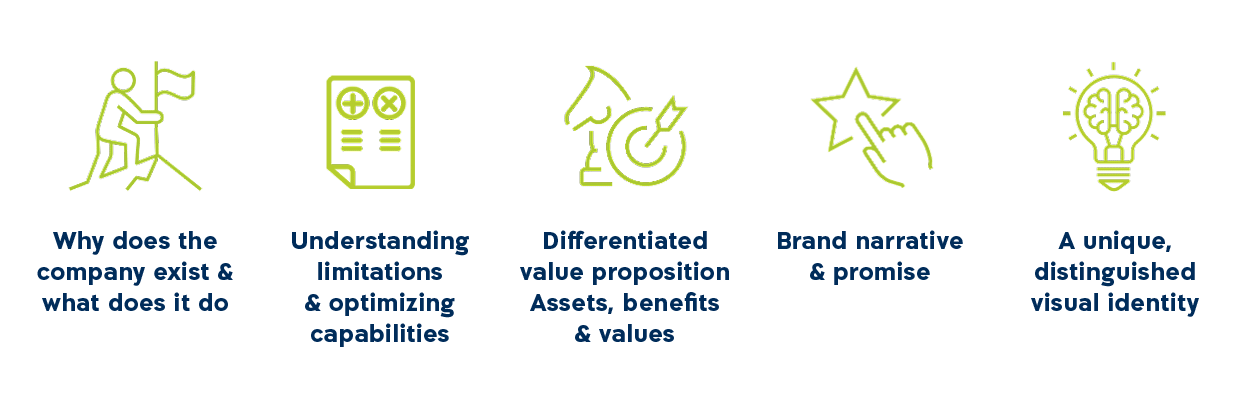
Challenging the norms
This dialogue is about helping the marketing team to understand the limitations in depth, and for the regulatory team to delve into the marketing team’s needs. It’s an authentic dialogue that creates a space to carry out activities that weren’t possible before. Understanding the precise needs opens up new perspectives and enables solutions within the boundaries of regulations. We understand the importance of compliance, but our experience shows that there are many degrees of freedom that are not being tested.It’s not about overstepping the bounds of the approved claims, but we also don’t want to take a step backward in the name of conservatism.
Sometimes it's a matter of overall wording, sometimes it's just changing one word. It's the little things that make a big difference. Stopping to ask questions often gives you a competitive advantage. Sometimes, there won’t be any flexibility in the claims you make, but at least you’ll know that you’ve turned over every stone.Structured and managed conflicts are an opportunity
Remember, whoever sits at the decision-making table wants the company to succeed and do the best they can. Inherently, conflict is not a negative; it can also be an opportunity. Don't let emotions run the process. As we often say, “Don’t be right, be smart!” As with every relationship where there’s an inherent conflict, there’s great value in professional guidance to create the conditions for a productive dialogue. To meet this need, we’ve created a special collaboration between OZ Global B2B and Leap, led by Moran Faibish, who has extensive experience in leading marketing in global medical companies. Moran has hands-on experience in bridging the gap between marketing and regulations to create deep and unique brand promises — promises that aren’t possible without providing an informed and professional framework that enables constructive communication.Play smart
The more we play smart within the regulatory limits to make the most of your claims, the more we can create a differentiated value proposition that more accurately reflects your breakthrough technology. This is how your brand will shine. We’ll be there every step of the way to guide the process, refine the messaging, and make sure your “WOW” comes through loud and clear. If you’ve nodded your head while reading this, it’s time for us to talk.


Stars are born. Winning B2B brands are built over time.
By
Nirit Elyovich, MBA
, 07/07/2024
Brand building is always complex, but B2B brands bring a whole level of complexity that simply doesn’t exist in the B2C world. It's a golden opportunity to create a one-of-a-kind standout brand promise that will make a difference in the world.
Building a new brand or giving an existing brand a facelift, is a golden opportunity to create a one-of-a-kind standout brand promise that will make a difference in the world. Building a significant brand is complex, but B2B brands bring a whole level of complexity that simply doesn’t exist in the B2C world. Decision-making processes are lengthy, decision-makers come and go, and increasingly, the decision-makers are Gen Y and Gen Z. The road to the end user is paved with importers, distributors, and dealers. The orientation of most of the people you are working with is engineering or sales. Your brand needs to make its way into everyone's hearts on the long and winding road ahead. From time to time, I still hear that "in the business world, people make rational decisions." In my experience, people are people even when they sit in the decision-making chair. Their considerations are professional, business, and personal and the brand needs to touch all these points
A meaningful brand must be relevant, differentiated, and inspired1. Be relevant
Before you begin, define your audience. Unlike launching a product line that appeals to distinct customers, a B2B brand speaks to a wide range of audiences – existing and potential customers, employees and candidates, investors, suppliers, opinion leaders, and influencers.
However, you operate in a very specific world, so finetune the audience that interests you and create circles of influence. Who is in the first circle and who is in the more distant circles? The brand needs to speak directly and accurately to members of the first circle and still be relevant to other circles.
To be relevant, you need to know your audience, what their challenges are, and where you can help them deal with their challenges well. To motivate people, we must touch their “operating” buttons, speak their language, and solve the problems that bother them. We want to sell them what they want to buy and not what we want to sell — even if it's the same thing.
2. Build a differentiated value proposition
To build a differentiated value proposition, start with A, B, and C: Assets, Benefits, and Core Values. Assets – What are your biggest assets? What strengths are you most proud of? Make a list of the things you're best at – unique patented technology, people with unique knowledge, exceptional support and service, and more. Make sure that every strength that makes up your list is grounded in reality, and not an aspiration for something you'd like to have. From the list, extract the three most significant strengths. As much as possible, select those that differentiate you from the competition. Benefits –Step into your customers' shoes and think about what they get out of your strengths. This is where you ensure that you provide professional benefits that help them upgrade their professional field; business benefits that contribute to their business performance; and no less important, personal benefits. Ultimately, everything is personal simply — because people want to make sure that choosing you promotes their reputation within the organization. Core Values – Brand values are always important, but even more so in the B2B world. People are an integral part of your value proposition – whoever defines the specifications with the customer, develops, sells, installs or integrates, provides service and support – all these and more bring the brand to life. They must follow a uniform set of values to ensure that they deliver the benefits to the customer and subsequently deliver on the brand promise. If the company was founded recently, the values may be naturally infused into the brand. If the company is alive and kicking, the values are usually passed down over the years. Make sure the values reflect the company's DNA.
There's nothing new under the sun You may find that your competitors have an asset, benefit, or value that appears to be similar to yours. However, the combination of assets, benefits, and values must be unique to your company. That's why starting with unique assets and formulating benefits that address your clients' deep and diverse needs is important.
The more you get to know your clients, the more likely you will produce differentiated benefits. This is another opportunity for differentiation: your founders, owners, and significant employees are the unique spirit that makes your company what it is.
3. Bring inspiration to life with a promise
To make sure your brand inspires you and everyone you meet, go back to your vision. The thing that fascinated you when you started your business or that attracted you to join the company. The reason you get up in the morning and go to work. The North Star lights the way for you, even on days when visibility is poor. Your vision is an ambitious statement that describes what your organization ultimately wants to be. Spoiler alert: you're not supposed to get it, you’re supposed to aspire to reach it. As Aviv Geffen put it, " The moon is so high up there that we can't touch it, and there are some who are still trying.” Your vision is there to lift you high above your daily activities and inspire you.
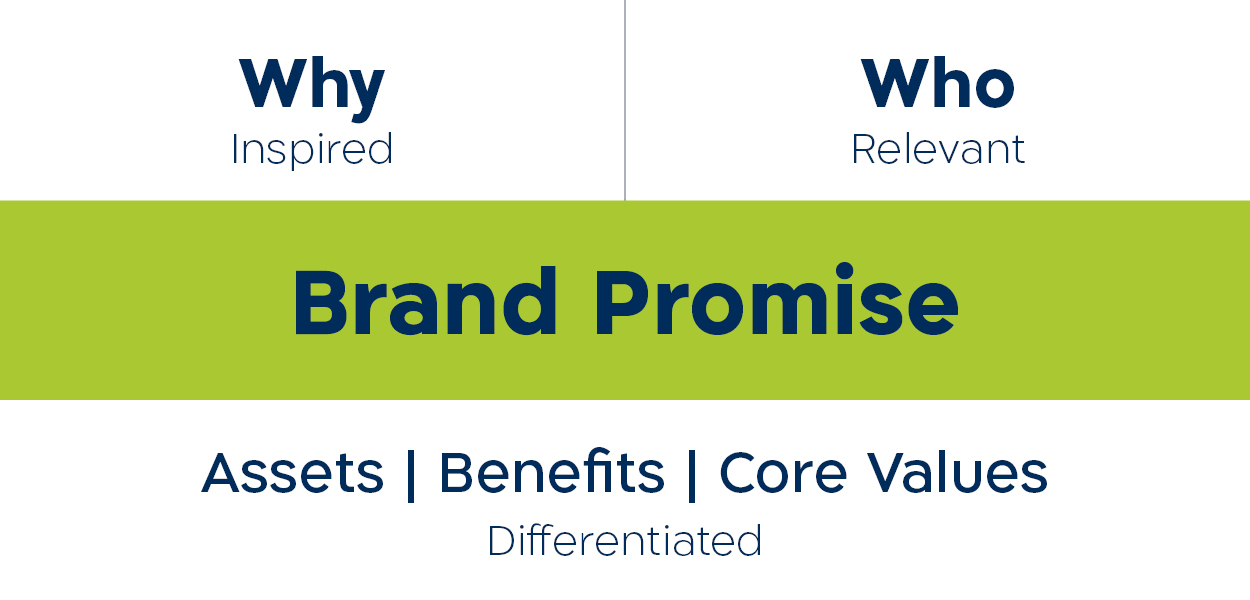
Building or refreshing a brand is a strategic task
Don’t cut corners. Enjoy the journey as much as the destination. Get as many people involved in the process as possible to make everyone feel a part of it. This is how to make them the best ambassadors for your brand.
Formulating a brand strategy is an extremely important and complex process, but it’s only the beginning. From now on, the entire organization has to fulfill it, to bring the brand into the lives of those who experience it exactly as you intended. In the B2B world, your brand will touch a lot of people for many years to come. Make sure that everyone has the same experience, irrespective of the language they speak.
A brand is a promise. A strong brand is a promise that is fulfilled every day in every encounter between the brand and the world.
How to Identify and Meet Your Door Openers
By
Nirit Elyovich, MBA
, 26/03/2023
How to Identify and Meet Your Door Openers How can you identify and get to know the people who are in the right position to open the door for you? In a recent webinar, Nirit Elyovich, our VP Strategy, shared some key insights.
- Who are the door openers?
- How can you get to know them better?
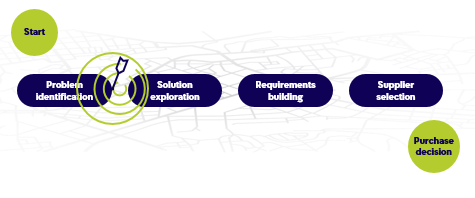 1. Stay as close to the beginning of the purchase journey as possible
The role of marketing is to generate demand. The earlier we meet the interested parties at the beginning of the purchase journey, the more we will increase our chances of entering the consideration set — to be one of the suppliers they are considering.
This is the point when they realize that there is a problem. As the need arises, they begin to learn about the alternatives that exist in the market. It's time for you to enter the picture.
Key takeaway: Find the earliest point in the purchase journey, even before your potential customers start contacting suppliers.
2. Expand your search beyond the obvious and cast a wider net – to influencers and KOLs
Entire industries are undergoing a shake-up and need to update their business strategy. In this scenario, it’s strategic consulting companies that will be recommending new business directions to them. If a high-profile consulting company recommends you, you’ve done your part. Obviously, they won't recommend you if they don't know about you. But if you recognize them as the ones who can open the door for you and you bring your company to their attention, new horizons will open up for you.
If you’re working in the same space with complementary companies, leverage it. As an example, companies in the agritech space are all targeting the same growers. They don’t compete but complement one another. Growers are already working with a company trusts them. If they recommend you, then your chances of setting a meeting and staying to build a relationship, are far greater.
Key takeaway: Differentiate yourself and try to reach your door openers through avenues that others haven’t yet discovered.
3. Copy your ideal customer
Think of a customer of yours that you would like to duplicate. Your potential dream client — the one who, if you get it right, will allow you to duplicate your offer to lookalike clients.
It’s really what a persona is all about — a typical figure that represents your target audience. The idea is to learn from the individual and expand it to a broader audience. If it’s too niche and cannot be replicated, it won't really help you.
Key takeaway: If it works, do it again!
How can you get to know your door openers better?
Each persona has their own "buttons", that when pushed cause them to act. If you know what motivates your door openers, you’ll be able to reach them. That's why it's important to build a profile for each persona you’ve chosen.
1. Stay as close to the beginning of the purchase journey as possible
The role of marketing is to generate demand. The earlier we meet the interested parties at the beginning of the purchase journey, the more we will increase our chances of entering the consideration set — to be one of the suppliers they are considering.
This is the point when they realize that there is a problem. As the need arises, they begin to learn about the alternatives that exist in the market. It's time for you to enter the picture.
Key takeaway: Find the earliest point in the purchase journey, even before your potential customers start contacting suppliers.
2. Expand your search beyond the obvious and cast a wider net – to influencers and KOLs
Entire industries are undergoing a shake-up and need to update their business strategy. In this scenario, it’s strategic consulting companies that will be recommending new business directions to them. If a high-profile consulting company recommends you, you’ve done your part. Obviously, they won't recommend you if they don't know about you. But if you recognize them as the ones who can open the door for you and you bring your company to their attention, new horizons will open up for you.
If you’re working in the same space with complementary companies, leverage it. As an example, companies in the agritech space are all targeting the same growers. They don’t compete but complement one another. Growers are already working with a company trusts them. If they recommend you, then your chances of setting a meeting and staying to build a relationship, are far greater.
Key takeaway: Differentiate yourself and try to reach your door openers through avenues that others haven’t yet discovered.
3. Copy your ideal customer
Think of a customer of yours that you would like to duplicate. Your potential dream client — the one who, if you get it right, will allow you to duplicate your offer to lookalike clients.
It’s really what a persona is all about — a typical figure that represents your target audience. The idea is to learn from the individual and expand it to a broader audience. If it’s too niche and cannot be replicated, it won't really help you.
Key takeaway: If it works, do it again!
How can you get to know your door openers better?
Each persona has their own "buttons", that when pushed cause them to act. If you know what motivates your door openers, you’ll be able to reach them. That's why it's important to build a profile for each persona you’ve chosen.
 Every persona, even in the same organization, is motivated by different things. There’s no single message that motivates everyone. To get a clearer picture, ask yourself these questions:
Every persona, even in the same organization, is motivated by different things. There’s no single message that motivates everyone. To get a clearer picture, ask yourself these questions:
- What tasks need to be done — What is on the decision maker’s plate? Typically, people only listen if it’s in their scope of activity. This is critical!
- What are the aspirations of each persona — What do they want to achieve within their role? In short, what are their “gains?”
- What are their pain points — What makes it difficult to achieve their goals?
 To convince someone to let you in the door, they must be convinced that it will bring significant value both to the company and themselves.
Meir Ariel sings, "The doors guess who I am and open by themselves." It would be great if that was true in the business world, where the doors we are looking don’t recognize us and won’t open by themselves.
Knock, knock, knocking on the right door
To sum up, when you focus on the beginning of the customer journey, expand your view to less obvious places, and know which persona profile you’re looking for, there’s a good chance you will reach the people who can open the door for you. Then all you have to do is enter.
To convince someone to let you in the door, they must be convinced that it will bring significant value both to the company and themselves.
Meir Ariel sings, "The doors guess who I am and open by themselves." It would be great if that was true in the business world, where the doors we are looking don’t recognize us and won’t open by themselves.
Knock, knock, knocking on the right door
To sum up, when you focus on the beginning of the customer journey, expand your view to less obvious places, and know which persona profile you’re looking for, there’s a good chance you will reach the people who can open the door for you. Then all you have to do is enter.
Consumerize the Customer Journey
By
Nirit Elyovich, MBA
, 25/01/2022
Early in my career, a wise woman said customers pay my salary, not owners. It's vital for marketers to consider future customers' needs.
The new B2B customer is a digital native
Our childhood determines our future behaviors as adults, the people we become, and the decision-makers we grow up to be. It is also true of the technological environment in which we were raised.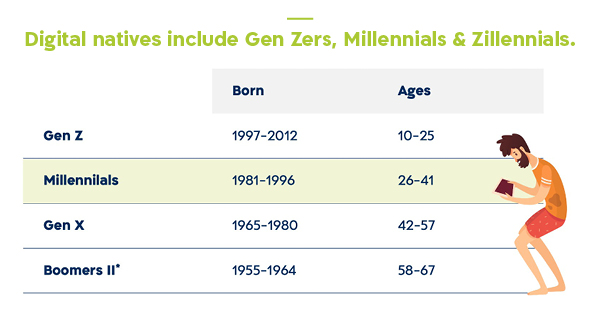 The millennials, also known as Generation Y, were born after 1980. They are now in their 30’s. Generation Z, as you can see in the table, is still young, but we will soon see them influencing our businesses. Since technology is changing very quickly, a sub-generation was born between the Millennials and Generation Z. Zillennials were born between ‘93-‘98 and were influenced by more advanced technology than the Millennials.
For their entire lives, digital natives have been surrounded by technology, social media, mobile devices, computers, and the internet. They speak this digital language as their mother tongue. They did not learn this language in their 20’s, 30’s, or later. They do not have an accent, so to speak.
The millennials, also known as Generation Y, were born after 1980. They are now in their 30’s. Generation Z, as you can see in the table, is still young, but we will soon see them influencing our businesses. Since technology is changing very quickly, a sub-generation was born between the Millennials and Generation Z. Zillennials were born between ‘93-‘98 and were influenced by more advanced technology than the Millennials.
For their entire lives, digital natives have been surrounded by technology, social media, mobile devices, computers, and the internet. They speak this digital language as their mother tongue. They did not learn this language in their 20’s, 30’s, or later. They do not have an accent, so to speak.
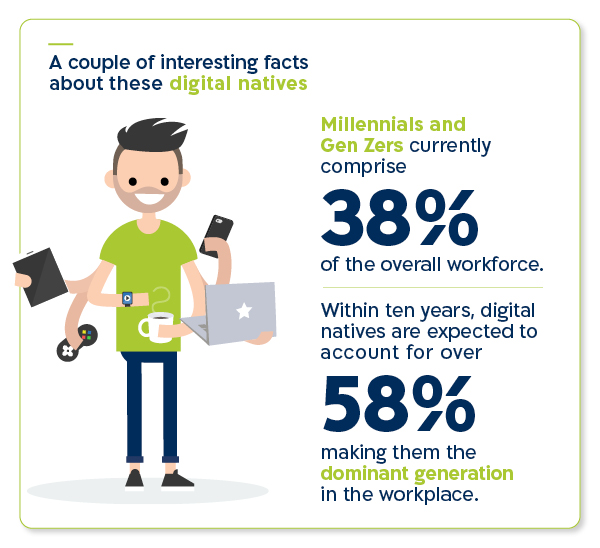
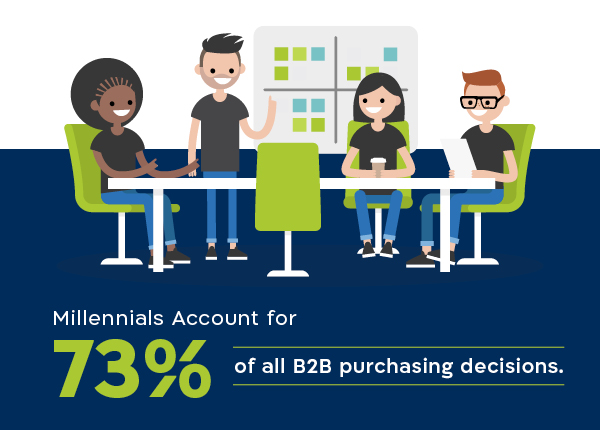 This impressive figure tells the whole story: More and more millennials and gen zers are entering the B2B decision journey, some as technological or professional influencers and others as decision-makers. It is important to note that among the people involved in decision-making, you usually meet several generations.
A few months ago, we at Oz Global B2B did a project for the American agricultural market. The intergenerational integration in the decision-making process that arose there was very prominent.
This impressive figure tells the whole story: More and more millennials and gen zers are entering the B2B decision journey, some as technological or professional influencers and others as decision-makers. It is important to note that among the people involved in decision-making, you usually meet several generations.
A few months ago, we at Oz Global B2B did a project for the American agricultural market. The intergenerational integration in the decision-making process that arose there was very prominent.
-
- A family business where the younger generation initiates a decision, and the founding generation approves it. Sometimes the founder initiates the decision but immediately passes it on to the younger generation to check online what the options are.
- A senior manager at a big business closes a deal, but the people in the field - professionals or salespeople - do not “speak” the same language. This will greatly affect the next purchase.
The Millennials and Gen Zers highly influence who will enter the decision funnel
About 50% of all product searches on the web are conducted by digital natives. The customer journey is long, complex, and involves many stakeholders.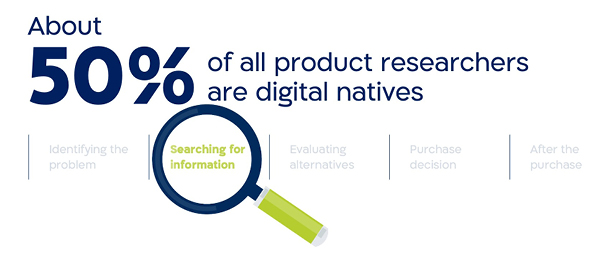 By the time the customer recognizes that he has a problem, we are, in most cases, not there. Identification is an internal stage from which someone is appointed to start researching information to find options for a solution.
50% of those who conduct the research and seek alternatives regarding a product or service, may not take an "official" part in decision-making but are the ones who put the relevant suppliers in the decision-making funnel. They are the ones who build the long list. They are the ones who decide whether or not you will be included in the “consideration group,” which is of critical importance.
By the time the customer recognizes that he has a problem, we are, in most cases, not there. Identification is an internal stage from which someone is appointed to start researching information to find options for a solution.
50% of those who conduct the research and seek alternatives regarding a product or service, may not take an "official" part in decision-making but are the ones who put the relevant suppliers in the decision-making funnel. They are the ones who build the long list. They are the ones who decide whether or not you will be included in the “consideration group,” which is of critical importance.
Two tips to gain the trust of digital natives:
1. Be authentic!
The generation that grew up on social networks, fake news, and unfounded marketing does not believe in marketing messages and does not believe in unproven statements. They have developed a hypersensitivity to online messages - they suffer from a blatant lack of trust in what is being said online. They continue to consume information online, but with a very large firewall. The bright side of it is that digital natives recognize authenticity when they see it..So what does authentic marketing look like?
-
- Get your executives to use social media Customers want to know the people behind the executives or the company representatives that they are in contact with.Make sure your site reveals who you are beyond your formal title. What topics do you choose to share? Who are your friends, what groups do you belong to, and to whom do you respond to?LinkedIn is not everything. Feel free to diversify to other social networks - Facebook, Instagram, Twitter, and even Tik Tok.
- Share user-generated content from real people Show real things, with real customers behind them. If you trust your product, let it tell your story.
- Go live on social media platforms Talk without filters. To digital natives this sounds obvious, to digital immigrants, it is less trivial. At first, the digital immigrants posted posts after editing them numerous times. Then they agreed to post an edited video. The transition to live video is scarier, but this is exactly the meaning of authenticity.
- Promote employee advocacy Empower your employees to share smart, quality content with their own social networks. On average, employee networks have 10x more connections than a company has followers. Plus, according to the Edelman Trust Barometer, people are 3x more likely to trust company information shared by an employee than that shared by a CEO.
2. Consumerize!
This word does not exist in the dictionary yet but already stars in the literature that follows trends in the B2B world. As Mona Akmal, Falkon CEO and Cofounder, once said, “As work and life flexibly intertwine, so must our approach to reaching our target users.” Gone are the days when the customer was a business person between 9-17 and a consumer on evenings and weekends. Studies show that the business customer is very much influenced by his consumer experience and expects to have a similar experience in business purchases. The customer experience touches on all stages of the journey - collecting information, placing an order, contacting the company up to paying.- More than 80% of B2B customers stated that they will look for a new supplier if their expectations in terms of customer service and user experience are not fulfilled.
- According to McKinsey & Co, B2B brands score below 50% on customer experience index ratings on average, compared to 65 to 85% for typical B2C brands.
- Gartner illustrates that 77% of B2B buyers report that their last purchase was very difficult or complex.
To sum up…
- The digital natives are digital animals. They were born into it, and it is their playground. It requires us to be present and comfortable in the digital space. Allow them to find us easily and learn about us in a convenient way that interests them. Allow them to easily consult, purchase and pay online.
- Life in the digital arena has taught them to be suspicious, not to believe everything they are told. They have developed the skills and expertise to recognize fake news when they see it. This requires us to be authentic in interactions with them, without filters and edits.
- Remember, before they are decision-makers, customers, or partners, they are first and foremost human beings. Their personal lives have seeped into their business life and it is very difficult for them to separate the two. So, we have no choice but to "consumerize" the way we treat them.
